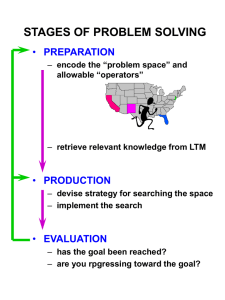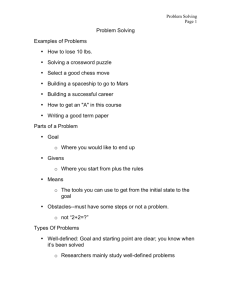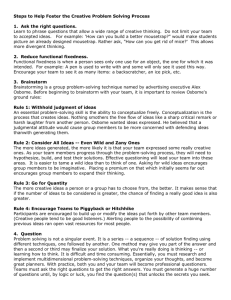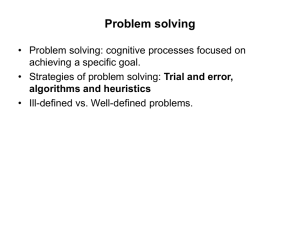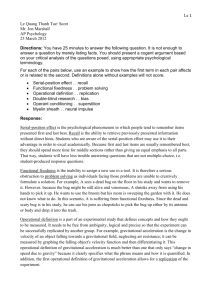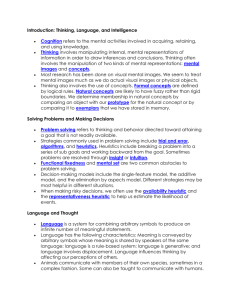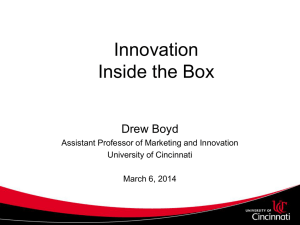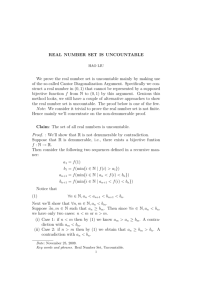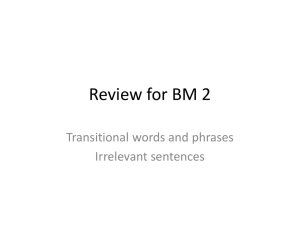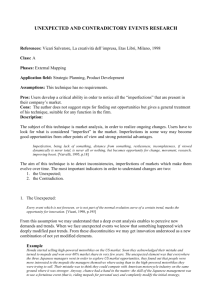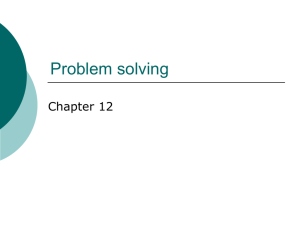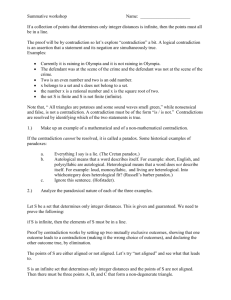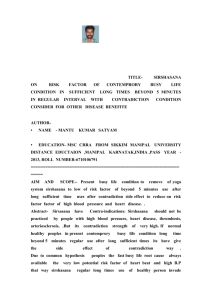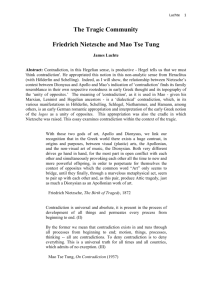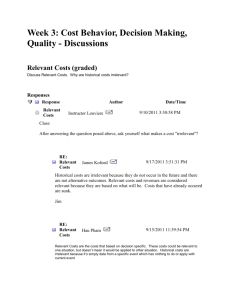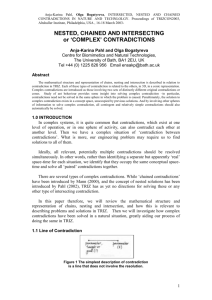Development of Problem Solving Skills
advertisement
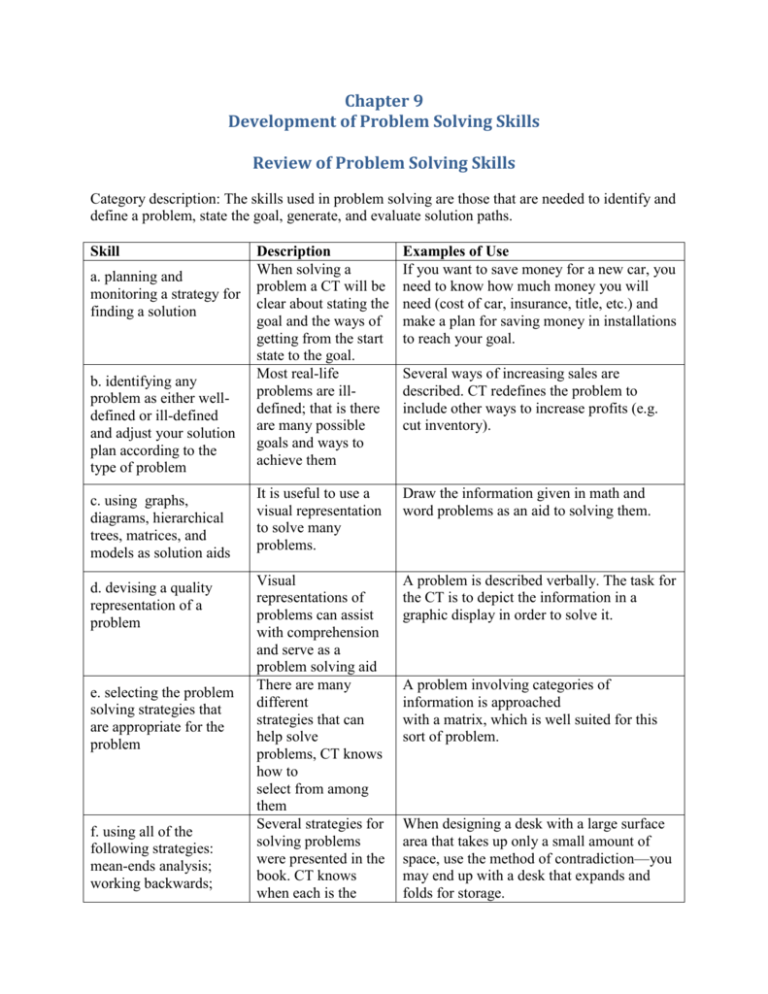
Chapter 9 Development of Problem Solving Skills Review of Problem Solving Skills Category description: The skills used in problem solving are those that are needed to identify and define a problem, state the goal, generate, and evaluate solution paths. Skill Examples of Use If you want to save money for a new car, you need to know how much money you will need (cost of car, insurance, title, etc.) and make a plan for saving money in installations to reach your goal. b. identifying any problem as either welldefined or ill-defined and adjust your solution plan according to the type of problem Description When solving a problem a CT will be clear about stating the goal and the ways of getting from the start state to the goal. Most real-life problems are illdefined; that is there are many possible goals and ways to achieve them c. using graphs, diagrams, hierarchical trees, matrices, and models as solution aids It is useful to use a visual representation to solve many problems. Draw the information given in math and word problems as an aid to solving them. d. devising a quality representation of a problem Visual representations of problems can assist with comprehension and serve as a problem solving aid There are many different strategies that can help solve problems, CT knows how to select from among them Several strategies for solving problems were presented in the book. CT knows when each is the A problem is described verbally. The task for the CT is to depict the information in a graphic display in order to solve it. a. planning and monitoring a strategy for finding a solution e. selecting the problem solving strategies that are appropriate for the problem f. using all of the following strategies: mean-ends analysis; working backwards; Several ways of increasing sales are described. CT redefines the problem to include other ways to increase profits (e.g. cut inventory). A problem involving categories of information is approached with a matrix, which is well suited for this sort of problem. When designing a desk with a large surface area that takes up only a small amount of space, use the method of contradiction—you may end up with a desk that expands and folds for storage. simplification; generalization and specialization; random search and trial- anderror; rules; hints; splithalf method; brainstorming; contradiction; analogies and metaphors; and consulting an expert appropriate tool for solving a problem. g. demonstrating an awareness of functional fixedness so as to avoid it Functional fixedness is the inability to see how something can be used in a way that is different from its usual function. In real life, we often have information available that is not relevant to solving a problem. h. distinguishing between relevant and irrelevant information i. understanding how world views can constrain the problem solving process j. Recognizing the critical role of persistence We all operate in a culture and we often cannot “see” solutions that are not culturally acceptable. One of the best predictors of success when solving problems is persisting until a good solution is found When you use a shoe as a hammer or a stapler to fix a hem, you are demonstrating that you can “break out of” functional fixedness. Focusing on climate-related information can help us solve the problem of climate change without being side-tracked with irrelevant information that paints political parties in good or bad ways—political digressions unrelated to climate change. In some cultures people often barter for goods when money is short, but few people in cultures where this is not customary think about the possibility of bartering. When encountering a difficult problem, CT doesn’t quit when a solution is not immediately obvious, but keeps working on it.
